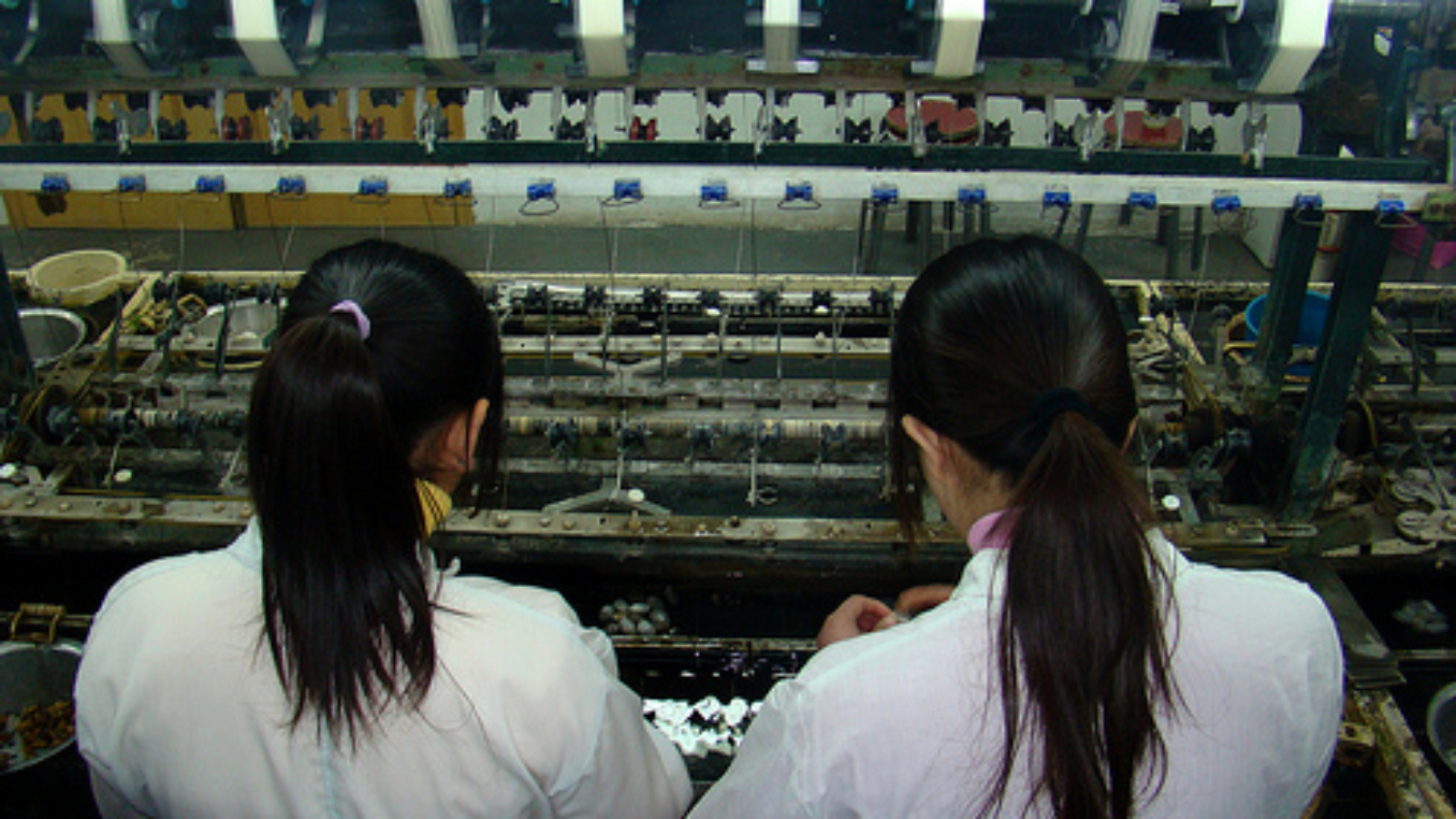Over the past two-and-a-half months, the running story of labor unrest across China has graced the cover of the Economist, sparked a debate forum in the New York Times, and warranted a special In-depth section on the Financial Times website. It’s a broad story that can be broken down into countless subtopics (including last week’s post on the differences between the pay raises following the Foxconn suicides and those after the Honda strikes), but one of the most striking of these is the divide between the way unrest is being handled in cities along China’s coast versus those in the country’s interior.
In short, there are two Chinas when it comes to manufacturing (though the country can be broken down much further). With few exceptions, manufacturing in provinces like Guangdong and Tianjin (just outside of major coastal cities Hong Kong and Shanghai) accounts for most of the higher-end consumer electronics and durable goods produced in China. It takes place in large chains of factories and compounds that are mostly foreign-owned, usually by big companies based in Taiwan, Japan and the United States. These companies (Foxconn, Honda and Flextronics are good examples for each respective country) are the ones whose managers gave in to demands for wage increases, and whose factories the Chinese government allowed the press to access. The official labor unions still side with the state over workers, but police brutality is unusual. In the end, after this round of unrest, nearly all of the workers in these factories enjoyed a wage hike.
Inland, in places like Henan province or the municipality of Chonqing, a different dynamic pervades. Factories are mostly state- or Chinese-owned, hardly any of them produce high-value-added goods and the presence of Western press is minimal. When strikes do occur, the state deals with them more harshly and with greater ease. At a domestic-owned cotton mill in Pingdingshan, a city in Henan Province, two to three thousand police cracked down brutally on the more resolute among 8,000 striking workers. Across the interior state-sponsored news outlets have reported that strikes like these were ‘resolved’ without pay raises—as occurred at a cheap electronics goods factory in Xi'an, Shaanxi province. The Western media, with one notable in the Toronto Star's continued coverage, has been largely absent.
For decades the coast has been a better place to strike than the interior; this year, though, strikers there have done better than ever. In Guangdong province on China’s south coast, for example, more than 36 strikes occurred in 48 days. Those at Atsumitec in Foshan, which supplies gear parts to Honda, returned to work on July 22nd with a pay rise of 47 percent. Guangdong has raised the province-wide minimum wage level, with individual cities raising their minimum wage further, by up to 20 percent.
 The longer-term reason for these heavy concessions is that workers are becoming harder to find, keep, and replace. China’s villages in the interior, still contain roughly 70 million potential migrants, but the labor supply is dwindling. The number of 15- to 29-year-olds will fall sharply next year and is projected to decline by one third by 2025. The one-child-policy generation is smaller and went to industrial cities in droves, leaving behind improving living standards in the countryside to which some —in the absence of city jobs—have been returning.
The longer-term reason for these heavy concessions is that workers are becoming harder to find, keep, and replace. China’s villages in the interior, still contain roughly 70 million potential migrants, but the labor supply is dwindling. The number of 15- to 29-year-olds will fall sharply next year and is projected to decline by one third by 2025. The one-child-policy generation is smaller and went to industrial cities in droves, leaving behind improving living standards in the countryside to which some —in the absence of city jobs—have been returning.
Yet concessions to boost wages are also part of a shift in government policy. Beijing has long been balancing twin strategies that enhance its geopolitical position, but are hard to implement together. The first strategy is to make the China’s economy less dependent on exports and more self-sufficient; this is best done by allowing domestic wages to rise in accordance with productivity, thus putting money in Chinese consumers’ pockets and boosting domestic demand to fill in for the decline in demand from increasingly frugal developed countries. The second goal is to continue to amass American treasury bonds, foreign currency reserves and an ever-more-positive trade balance.
—David Black
Image via Flickr, user istolethetv
